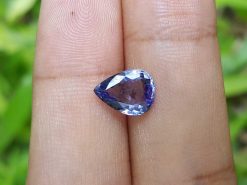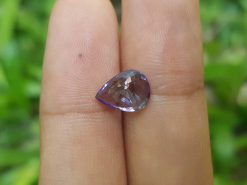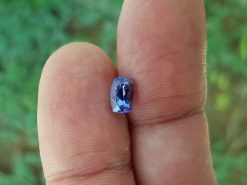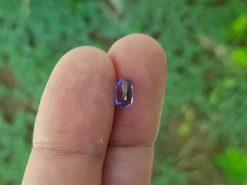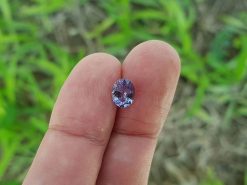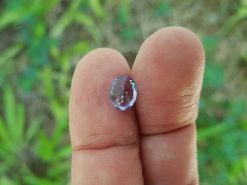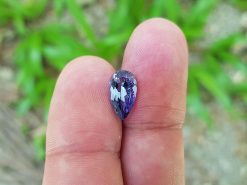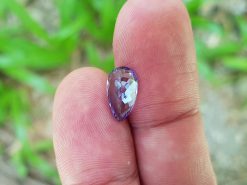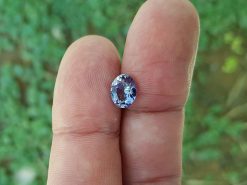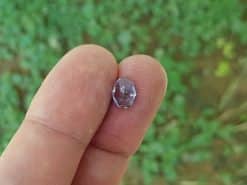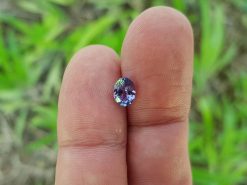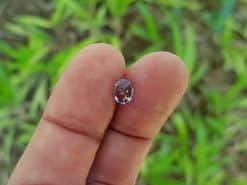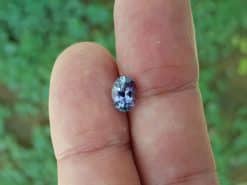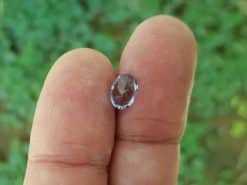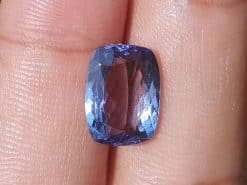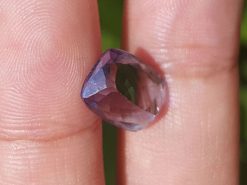Tanzanite
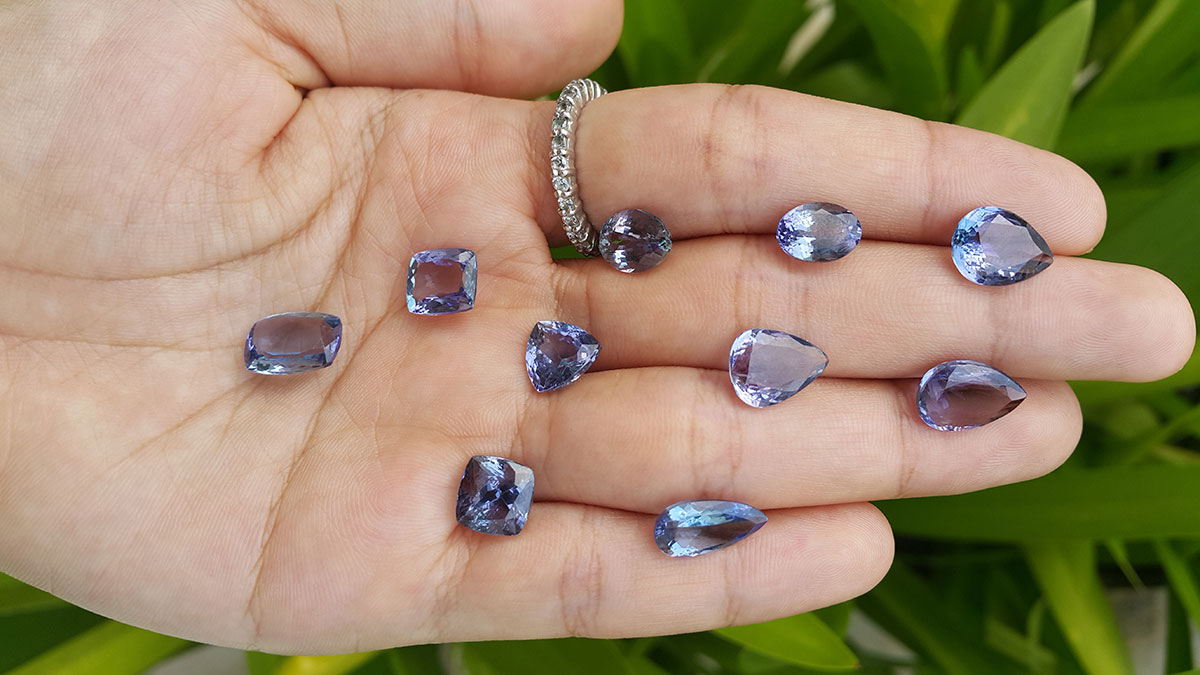
Tanzanite stone is often use in jewelry as rings or earrings, bracelet, pendant.
Buy natural tanzanite in our shop
Tanzanite gemstone
The blue and also violet variety of the mineral zoisite. Belonging to the epidote group. The gemstone was discovered by Manuel d’Souza in 1967. In the Merelani Hills of Manyara Region, Northern Tanzania. Near the city of Arusha and Mount Kilimanjaro.
The only source is furthermore Tanzania. In a very small mining area. Approximately 7 km long and 2 km wide. Near the Mirerani Hills.
A remarkably strong trichroism is visible on the stone. It appears alternately blue, and also violet. Burgundy depending on crystal orientation. It can also appear differently when viewed under alternate lighting conditions. The blues appear more evident when subjected to fluorescent light. The violet hues is easily visible when subjected to incandescent illumination. In its rough state tanzanite is sometime reddish brown. By heat treatment, it s possible to remove the brownish color. It finally brings out the blue violet of the stone.

Tanzanite history
Manuel d’Souza, a tailor and part-time gold prospector living in Arusha Tanzania. He found transparent fragments of blue and blue-purple gem crystals on a ridge near Mirerani. About 40 km southeast of Arusha. He assumed that the mineral was peridot.
But after soon realizing it wasn’t, he concluded it was dumortierite. Shortly thereafter, John Saul saw the stones. A Nairobi-based consulting geologist.
Gemstone wholesaler who was then mining aquamarine in the region around Mount Kenya. Saul, who later discovered the famous ruby deposits in the Tsavo area of Kenya. He eliminates dumortierite and cordierite as possibilities. And sent samples to his father. Hyman Saul, vice president at Saks Fifth Avenue in New York.
Hyman Saul brought the samples across the street. To the Gemological Institute of America. They finally correctly identified the new gem as a variety of zoisite mineral.
Correct identification was made by mineralogists at Harvard University. Also by the British Museum, and finally by Heidelberg University. But the very first person to get the identification right was Ian McCloud. A Tanzanian government geologist based in Dodoma.
Blue zoisite
Scientifically called “blue zoisite”. The gemstone was renamed as tanzanite by Tiffany & Co. Because they wanted to capitalize on the rarity. And a single location of the gem.
From 1967, probably two million carats were mined in Tanzania. Finally, the Tanzanian government nationalized the mines in 1971.
FAQ
How much is tanzanite worth today?
Tanzanite price and value changes based on the color, clarity and weight. From $50 to $1500 per carat. A noticeable green component will be worth significantly less. Tanzanite rings or earrings price also depend on the weight and quality of metal.
What is the best color for tanzanite?
A strong-to-vivid blue, purplish blue and violet blue color are the most valuable. These rich colors are the most appealing to the majority of people. Most stones has a light to medium tone and low to medium saturation.
Is tanzanite a precious stone?
There are only 4 precious stones: Diamond, ruby, sapphire and emerald. The stone is therefore a semi prcious stone.
Can tanzanite be worn everyday?
It is not a gem that should break easily but it can scratch more easily than harder colored gems like ruby and sapphire. Due its relative softness, it should be weared with respect. Pendants are much more protected than tanzanite rings, so it is fine to wear earrings or pendant everyday.
Is tanzanite a good investment?
It’s rarity makes it as a good investment as demand is growing, but the supply is limited. Expect the stone price of this rare blue gemstone to increase in the coming years.
What month is tanzanite a birthstone for?
It is not only a December birthstone, but it is also the gem for the 24th wedding anniversary. There are three different birthstones for the month of December. It also include blue topaz, and turqouise.
How can you tell if tanzanite is real?
True stones can let you see a pleochroism. By rotating the stone, you can observe green tones. If the stone is heated, the green tones are less visible to the naked eye but still remain visible thanks to a small gemology instrument, the dichroscope.
Why is my tanzanite cloudy?
There can be 2 reasons. The first is a low quality of your stone, due to the large number of internal inclusions. The second may be due to a scratched surface, which therefore reduces the shine and transparency of the stone.
Can tanzanite be lab created?
Lab created or synthetic stones with the same chemical composition does not exist yet, but there are different kinds of synthetic stones that imitate the same color.
What is the difference between tanzanite and amethyst?
They can be both purple but don’t have a clear indication of basic color scheme. You could say amethyst is warmer with purple and pink accents. the crystal has cooler purple with blue or green accents.
Does tanzanite scratch easily?
The stone has a hardness of 6.5 to 7.0 and is considered durable enough to be worn in most types of jewellery. It will scratch more easily than sapphire or diamond and should not be exposed to harsh chemicals and ultra-sonic cleaning.
Natural tanzanite for sale in our gem shop
We make custom made tanzanite jewelry as engagement rings, necklaces, stud earrings, bracelets, pendants… Please contact us for a quote.

